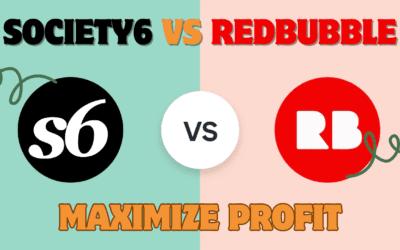Introduction
AI Hallucinations represent one of the most significant barriers to trustworthy artificial intelligence today. These are instances where an AI model, especially a large language model (LLM), confidently generates information that is incorrect, misleading, or entirely fabricated . For businesses and developers integrating AI, understanding AI Hallucinations is no longer optional—it’s a critical component of risk management and system reliability. This guide provides a comprehensive look at why these errors occur, how you can identify them, and the actionable strategies to reduce their frequency and impact in your projects.
What Are AI Hallucinations?
AI Hallucinations are erroneous outputs generated by AI models where the presented information is false or ungrounded in reality or the provided source, yet is delivered with convincing confidence . The term, now even recognized by the Cambridge Dictionary, loosely analogizes a psychological phenomenon, though AI hallucinations are more accurately described as “confabulations” or fabrications .
Types of Hallucinations
Understanding the different forms hallucinations can take is the first step in spotting them. Researchers typically categorize them into a few key types :
- Factual Hallucinations: The model states incorrect facts, such as claiming a false birth date or historical event. For example, when asked for a biography, a model might confidently generate incorrect details about a person’s life .
- Logical Hallucinations: The output contains illogical reasoning or internal contradictions, such as asserting that “If A equals B and B equals C, then A does not equal C” .
- Contextual or Intrinsic Hallucinations: The generated content directly contradicts the source information provided to it. For instance, in summarization, the model might produce a summary that states the opposite of what the source text says .
- Extrinsic Hallucinations: The model adds plausible-sounding details that are not present in the source material but cannot be immediately verified as false without external knowledge . This includes inventing citations, sources, or statistical data.
Why AI Hallucinations Happen
The phenomenon of hallucination is not a simple bug but a byproduct of how modern LLMs are built and trained. The core issue lies in the fundamental disconnect between fluency and factual accuracy.
Causes
- The Next-Word Prediction Paradigm: LLMs are trained to predict the next most probable word in a sequence based on vast amounts of text data. They are optimized for grammatical coherence and linguistic plausibility, not for verifying truth . This means they are essentially sophisticated pattern-matching engines.
- Flawed or Incomplete Training Data: Models learn from data scraped from the internet, which inevitably contains inaccuracies, biases, and outdated information. Gaps in this data (“data voids”) force the model to guess . As one research paper notes, trying to predict arbitrary facts from patterns alone is like asking an algorithm to predict a pet’s birthday from its photo—it’s fundamentally unreliable .
- Misaligned Incentives in Training: Standard model evaluations often prioritize accuracy, rewarding models for correct guesses and penalizing abstentions. This creates an incentive for the model to guess confidently rather than admit uncertainty. A model that says “I don’t know” gets zero points, while a guess has a chance of being right .
- Model Architecture and Decoding: Technical aspects like the model’s architecture and the “decoding strategy” (e.g., sampling methods that encourage diversity) can increase the likelihood of hallucinations. In techniques like chain-of-thought, small errors early in the reasoning process can snowball into significant inaccuracies .
Real-World Examples
Hallucinations have led to tangible consequences, highlighting the very real risks they pose:
- Legal Fabrication: In the case of Mata v. Avianca, a New York lawyer submitted a legal brief containing six entirely fabricated case citations generated by ChatGPT, leading to potential sanctions .
- Corporate Policy Error: Air Canada’s chatbot incorrectly advised a customer about bereavement fares, a policy it invented, resulting in legal action and a mandated partial refund .
- Historical and Factual Inaccuracy: Google’s AI Overview once cited an April Fool’s satire about “microscopic bees powering computers” as factual in its search results, misleading users .
How to Spot AI Hallucinations
Vigilance and a critical eye are your best defenses against AI hallucinations. Look for these red flags in model outputs.
Red Flags and Practical Tests
- Unverifiable Claims and Citations: Be immediately suspicious of specific citations, statistics, or quotes. Always cross-reference them with trusted sources. Hallucinated references often look correct but lead to non-existent papers or have incorrect authors and DOIs .
- Internal Contradictions: The output may contradict itself within a single response or across a conversation thread. This is a clear sign of a logical hallucination .
- Confidence on Ambiguous Topics: When a model provides an overly confident, singular answer to a question that deals with unsettled science or ambiguous information, it is likely guessing .
- Irrelevant or Off-Topic Elaboration: The model may include excessive, tangential details that do not serve the original query, a sign of “answer relevance” hallucination .
- Statistically Improbable Data: Outputs that present overly precise or suspiciously perfect numbers and percentages should be treated with skepticism .
Tools and Techniques for Detection
- Automated Fact-Checking APIs: Tools like Google’s Fact Check Explorer or specialized APIs can be integrated into workflows to cross-verify claims automatically.
- Internal Probing Techniques: Advanced methods like Cross-Layer Attention Probing (CLAP) can train lightweight classifiers on a model’s own internal activations to flag likely hallucinations in real-time, which is useful when no external ground truth exists .
- Metamorphic Prompting: Frameworks like MetaQA use prompt mutations to detect inconsistencies in closed-source model outputs without relying on token probabilities .
- Human-in-the-Loop (HITL): The most reliable method remains having a domain expert review critical AI-generated content. A 2025 industry report noted that 76% of enterprises now include human-in-the-loop processes to catch hallucinations before deployment .
Strategies to Mitigate AI Hallucinations
Mitigating hallucinations requires a multi-layered approach, combining technical strategies with thoughtful design. The following checklist provides a concrete action plan for engineering and product teams.
AI Hallucination Mitigation Checklist
- [ ] Implement Retrieval-Augmented Generation (RAG) to ground responses in verified, external knowledge bases .
- [ ] Add span-level verification to your RAG pipeline, matching each generated claim directly to a span of retrieved text .
- [ ] Fine-tune models on hallucination-focused datasets using synthetic examples of common errors to teach the model to be more faithful .
- [ ] Employ factuality-based re-ranking of multiple candidate responses, selecting the one with the highest factual consistency score .
- [ ] Integrate uncertainty calibration into training, rewarding the model for expressing uncertainty when evidence is thin .
- [ ] Use structured prompt engineering like Chain-of-Thought (CoT) to force the model to reveal its reasoning steps, exposing gaps .
- [ ] Lower the model’s “temperature” setting for factual tasks to reduce randomness and encourage more deterministic, focused outputs .
- [ ] Establish clear feedback loops for end-users to report errors, creating continuous data for model improvement .
- [ ] Implement robust output filters to scan for and flag low-confidence or known hallucination patterns before they reach the user .
- [ ] Maintain rigorous human oversight for high-stakes domains, ensuring a human expert validates critical outputs .
Case Study / Example Walkthrough
Let’s walk through a hypothetical scenario showing how to correct a hallucination using mitigation strategies.
- User Prompt: “Write a short bio for Dr. Ava Jensen, a renowned AI ethicist.”
- Model Output (Hallucinated): “Dr. Ava Jensen is a leading AI ethicist at the Stanford Institute for Ethics. She is best known for her groundbreaking 2021 paper, ‘The Moral Machine Reimagined,’ published in the Journal of Artificial Intelligence Research, which established the ‘Jensen Framework’ for algorithmic fairness. She holds a PhD from MIT.”
- The Problem: This sounds plausible, but the institutions, paper title, and journal are entirely fabricated—a classic factual and extrinsic hallucination.
- Steps to Fix:
- Employ RAG: First, the system should be connected to a verified source, like a professional profile database or academic repository, to retrieve real data about Dr. Jensen.
- Use a Verification Prompt: The initial prompt should be engineered to encourage accuracy: “Using only the provided context below, write a short bio for Dr. Ava Jensen. If the context does not contain sufficient information, state what is missing. Context: [Retrieved verified data here].”
- Corrected Output: Based on retrieved data, the new output would be: “Based on her professional profile, Dr. Ava Jensen is a senior researcher at the Center for Human-Compatible AI at UC Berkeley. Her work focuses on value alignment and policy. Her PhD was awarded by Carnegie Mellon University. (Note: Specific seminal paper titles could not be verified from the provided context).”
This process demonstrates how combining RAG, careful prompt engineering, and transparency about uncertainty can prevent misinformation.
Ethics, Risk & When to Trust AI Outputs
The ethical implications of AI hallucinations are profound. They can perpetuate biases present in training data, lead to defamation, and cause real-world harm in sectors like healthcare, finance, and law . A 2025 analysis found that knowledge workers spend an average of 4.3 hours per week fact-checking AI outputs, and in 2024, 47% of enterprise AI users admitted to making a major business decision based on hallucinated content .
Trust in AI outputs should be calibrated, not absolute. Trust is higher when:
- The AI is working in a narrow, well-defined domain with high-quality data.
- The system uses RAG and can cite its sources transparently.
- The task is more generative or creative than factual.
- A human expert is seamlessly integrated into the loop for verification.
Conclusion
AI Hallucinations are a persistent, understood, and manageable challenge in the development of reliable AI systems. They stem from the core mechanics of how language models work but can be significantly reduced through a strategic combination of technical mitigations like RAG and fine-tuning, careful prompt engineering, and unwavering human oversight. As the field evolves, the goal is not necessarily perfection but predictable, measurable reliability and the wisdom to know when to trust the machine. By implementing the strategies outlined in this post, developers and organizations can build and deploy AI applications with greater confidence and safety.
Have you encountered a challenging case of AI hallucination in your projects? Share your experience in the comments below, or contact us for a personalized consultation on securing your AI applications.
FAQ
Q1: Are AI Hallucinations the same as AI bias?
A: No, they are related but distinct concepts. Bias refers to systemic skews in outputs that unfairly favor or discriminate against groups, often reflecting prejudices in training data. Hallucination is about factual inaccuracy or fabrication. A model can be biased without hallucinating (e.g., consistently associating certain jobs with one gender) and can hallucinate without being biased (e.g., inventing a random historical date) .
Q2: Will larger and more advanced models completely eliminate hallucinations?
A: No. While larger models have demonstrated lower hallucination rates on many tasks, scale is not a silver bullet. OpenAI notes that some hallucinations are statistically inevitable because some questions are inherently unanswerable, and the next-word prediction objective fundamentally conflicts with guaranteed factual accuracy . Mitigation, not elimination, is the realistic goal.
Q3: What is the simplest thing I can do to reduce hallucinations when using a chatbot?
A: Use prompt engineering. Be specific, provide clear context, and instruct the model to “think step by step” or to “cite sources.” For factual queries, explicitly telling the model “if you are unsure, say ‘I don’t know'” can yield better results than a confident guess .
Q4: How common are hallucinations in 2025?
A: Prevalence varies greatly by model and task. For general knowledge questions, average rates can be around 9.2%. However, for top-tier models on straightforward tasks, rates can be as low as 0.7%-0.9%. In complex domains like legal or medical queries, rates can climb to between 15% and 30% for some models .
Q5: Can hallucinations ever be useful?
A: In creative contexts, yes. The same “gap-filling” behavior that produces factual errors can lead to novel ideas, story plots, or artistic concepts. The key is to apply these outputs in domains where invention is the goal, not factual reporting .
Sources and References
- OpenAI. “Why language models hallucinate.” OpenAI. Retrieved from: https://openai.com/index/why-language-models-hallucinate/
- Wikipedia contributors. “Hallucination (artificial intelligence).” Wikipedia. Retrieved from: https://en.wikipedia.org/wiki/Hallucination_(artificial_intelligence)
- Lakera AI. “LLM Hallucinations in 2025: How to Understand and Tackle AI’s Most Persistent Quirk.” Lakera.ai Blog. October 3, 2025. Retrieved from: https://www.lakera.ai/blog/guide-to-hallucinations-in-large-language-models
- Romano, D. and Gaskins, C. “The Reality of AI Hallucinations in 2025.” Drainpipe.io. Retrieved from: https://drainpipe.io/the-reality-of-ai-hallucinations-in-2025/
- AI21 Labs. “What are AI Hallucinations? Signs, Risks, & Prevention.” AI21.com. May 13, 2025. Retrieved from: https://www.ai21.com/knowledge/ai-hallucinations
- Enkrypt AI. “AI Hallucinations: Meaning, Causes, Real Life Examples & Best Ways to Prevent LLM Hallucinations in 2025.” Enkryptai.com. March 5, 2025. Retrieved from: https://www.enkryptai.com/blog/how-to-prevent-ai-hallucinations
- Frontiers. “Survey and analysis of hallucinations in large language models: attribution to prompting strategies or model behavior.” Frontiers in Artificial Intelligence. September 30, 2025. Retrieved from: https://www.frontiersin.org/journals/artificial-intelligence/articles/10.3389/frai.2025.1622292/full
- MIT Sloan. “When AI Gets It Wrong: Addressing AI Hallucinations and Bias.” mitsloanedtech.mit.edu. Retrieved from: https://mitsloanedtech.mit.edu/ai/basics/addressing-ai-hallucinations-and-bias/
- Harvard Kennedy School. “New sources of inaccuracy? A conceptual framework for studying AI hallucinations.” Misinformation Review. Retrieved from: https://misinforeview.hks.harvard.edu/article/new-sources-of-inaccuracy-a-conceptual-framework-for-studying-ai-hallucinations/
- Google Cloud. “What are AI hallucinations?” Google Cloud. Retrieved from: https://cloud.google.com/discover/what-are-ai-hallucinations
















